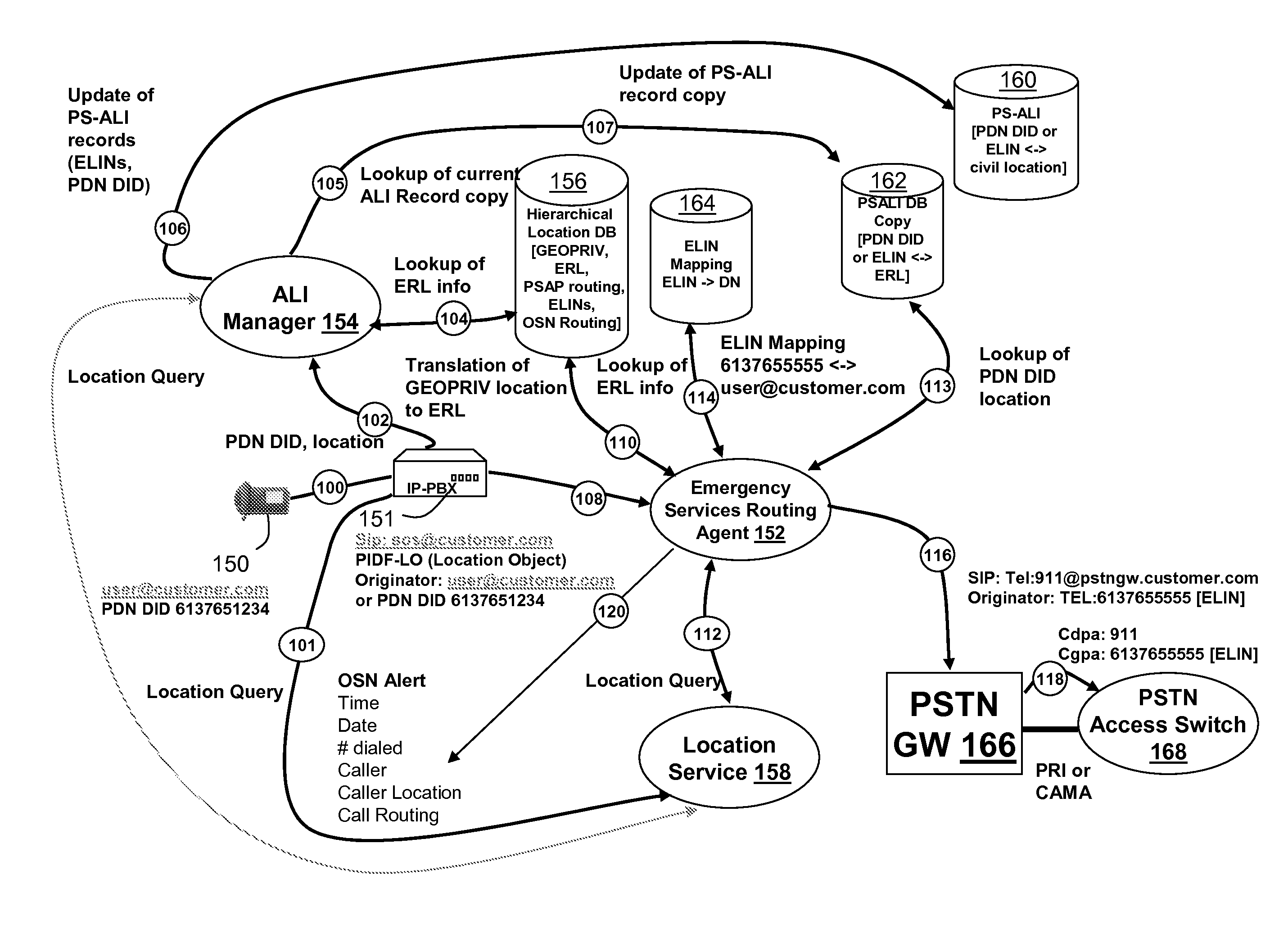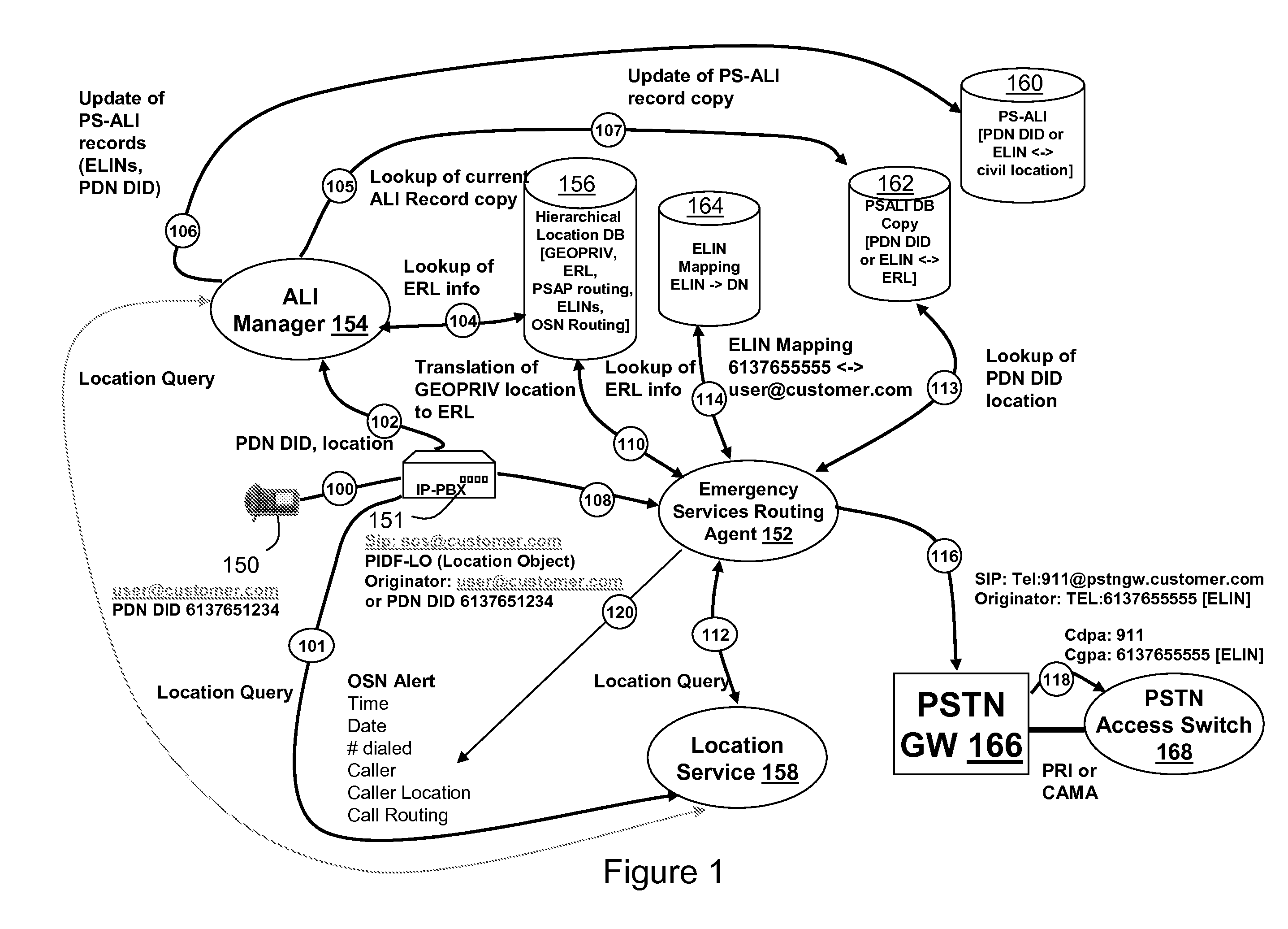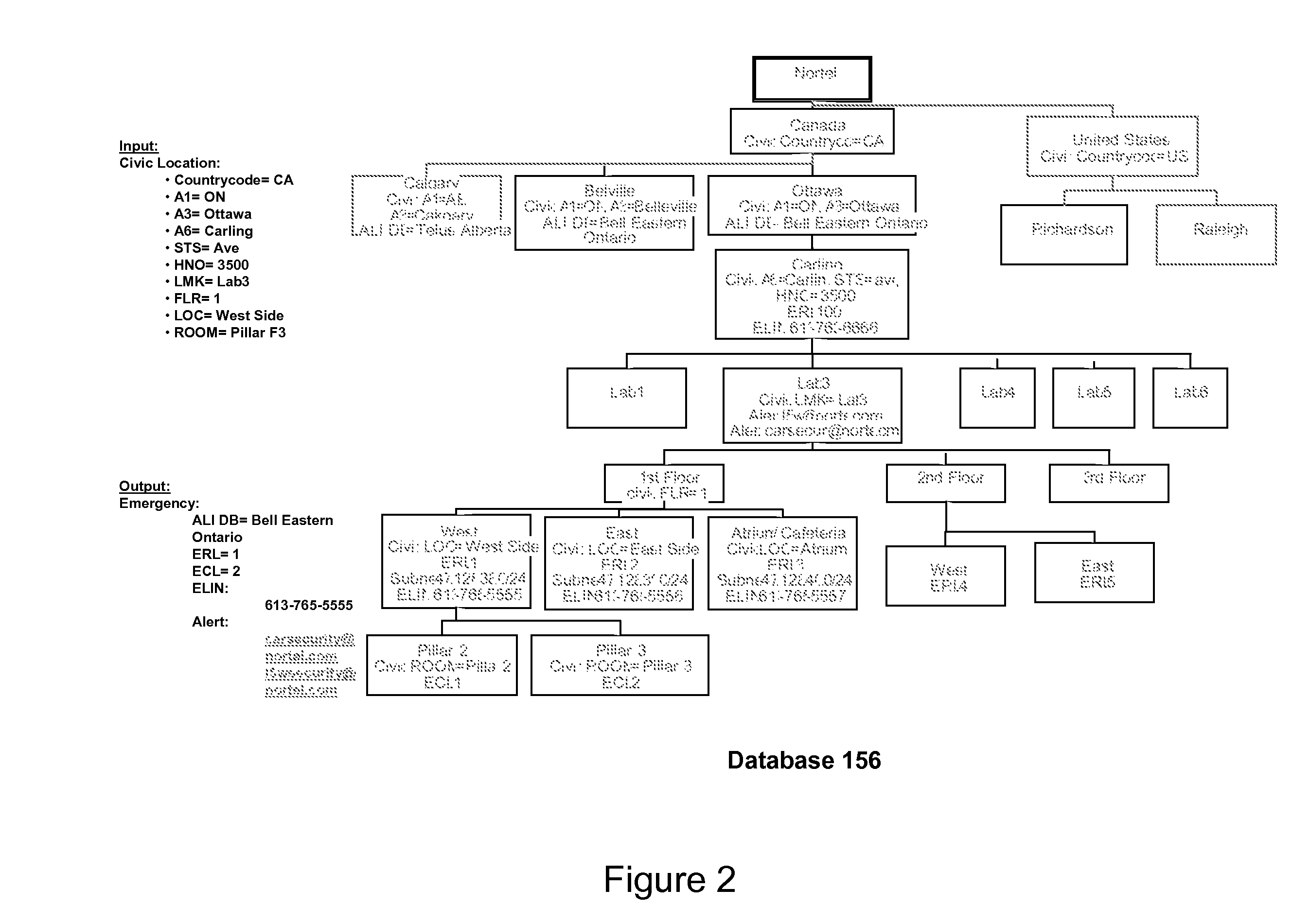Adaption of emergency calls to the emergency services network based on caller location
a technology of emergency services and caller location, applied in the field of emergency calling services, to achieve the effect of facilitating the handling of emergency calls via a voip system and enhancing the integration of emergency calling system technologies
- Summary
- Abstract
- Description
- Claims
- Application Information
AI Technical Summary
Benefits of technology
Problems solved by technology
Method used
Image
Examples
Embodiment Construction
FIG. 1 illustrates a scenario where a VoIP Phone (150) with service provided by an IP PBX (151) is employed to contact emergency services, e.g., 911, with civil or coordinate location information known, routing to a legacy PSTN Emergency Services Network. Configuration steps will have been executed prior to the call being placed. In step (100) the IP Phone registers with the IP PBX. The IP PBX is in communication with an Emergency Services Routing Agent (“ESRA”) (152), which may be executed in a call server, PBX, router, server, gateway, switch, or other network device. In step (101) The IP PBX (151) determines location information for the IP Phone via a mechanism such as a network location service. Alternatively, the IP phone (150) may provide Civil and / or Coordinate location information to the IP PBX (151) as part of a registration process. In step (102) the IP PBX reports a device location change, i.e., new device, to the ALI Manager (154). In step (104) the ALI Manager obtains E...
PUM
 Login to View More
Login to View More Abstract
Description
Claims
Application Information
 Login to View More
Login to View More - R&D
- Intellectual Property
- Life Sciences
- Materials
- Tech Scout
- Unparalleled Data Quality
- Higher Quality Content
- 60% Fewer Hallucinations
Browse by: Latest US Patents, China's latest patents, Technical Efficacy Thesaurus, Application Domain, Technology Topic, Popular Technical Reports.
© 2025 PatSnap. All rights reserved.Legal|Privacy policy|Modern Slavery Act Transparency Statement|Sitemap|About US| Contact US: help@patsnap.com



